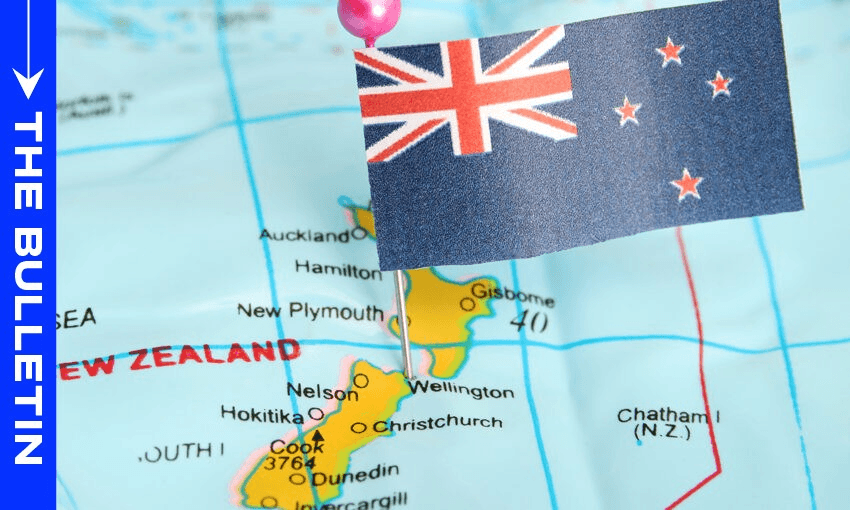Today’s tranche of new information will provide more detail about ‘who we are as a nation, and the richness of New Zealand’s diversity’, explains Stewart Sowman-Lund in this extract from The Bulletin.
To receive The Bulletin in full each weekday, sign up here.
‘More detail about who we are as a nation’
It may feel like a lifetime ago that we filled out the 2023 census, but today will see further data from the national population survey released to the public. In a statement shared here by Sunlive, Stats NZ confirmed it will release data on population counts by ethnic groups, dwelling counts, religious affiliations and Māori descent. “Building on the first release in May, this data will provide more detail about who we are as a nation, and the richness of New Zealand’s diversity,” said deputy government statistician Rachael Milicich. It’s also the first release of census data to include data on gender, sexual identity and variations of sex characteristics, said Milicich.
It follows the release back in May of the first tranche of data, focused on top line information such as the overall population (the “team of five million” slogan we regularly heard about during the Covid period was, in reality, a team of 4,993,923). The Spinoff’s Joel MacManus broke down 12 interesting factoids from the first round of data, including that the population is getting older and that the country’s becoming more diverse.
MacManus is back in the census lock up today and will have a full wrap of the latest data at about 10.45am on thespinoff.co.nz.
Iwi affiliation populations have increased
In the run up to today’s release, some initial data released by Te Kāhui Raraunga of the Data Iwi Leaders Group revealed all iwi affiliation populations have increased at an average of 46% between the 2013 and 2023 Census, reported Te Karere. There was also a 200% increase in the number of people affiliating with smaller iwi, explained The Spinoff’s Liam Rātana. “Over the last decade or so, there has been a renaissance of smaller iwi and hapū reclaiming their mana and identity,” wrote Rātana. “As the public profile of these groups grows and they improve their outreach, they are beginning to connect with more whānau.”
To assist with accurate data collection during the recent census, Te Kāhui Raraunga designed an interactive map that allowed whānau to click on different regions, which displayed iwi names and all available options. This change helped users see all possible affiliations and increased the number of affiliations they could select from five to 16.
The issue of trust
Last year’s census was filled out by about 90% of the resident population – up on the 2018 result which was plagued with issues. Nevertheless, there were disruptions, largely due to Cyclone Gabrielle. But while overall figures were up, there were some concerning findings among those who chose not to participate. As Laura Walters reported for Newsroom in April, the number of “hard refusals” rose significantly from the 2018 census and anti-government sentiment was to blame for almost 30% of this. In the lead up to the census, reported RNZ, briefings from Stats NZ revealed a $100,000 “national trust and confidence marketing campaign”, with officials worried about “growing and significant anti-government sentiment and reducing trust”.
The census was held about a year after thousands converged on the front lawn of parliament for an occupation that, reported The Spinoff’s Toby Manhire, “engendered – and fed on – an unprecedented surge in the sharing of disinformation and conspiracy theory across digital platforms”. Recent data released by Stats NZ, that we talked about briefly last week, revealed an overall decline in trust in major institutions, reported RNZ. That included the health system, parliament, media, police and the courts.
Where to now for the census?
There is no question that the days of filling in the census survey every five years are nearing an end. Or, at the very least, the way that data is collected will have to change. In a piece for The Conversation earlier this year, Massey University’s Paul Spoonley observed that New Zealand is changing at a rate quicker than the census can keep up with, pointing to declining fertility rates and fluctuating immigration stats as two trends worth keeping an eye on.
So what could happen? Stats NZ chief executive Mark Sowden said in April that the traditional “census” as it is currently known “will probably disappear over time” as administrative data (which is already used to bolster census information) is improved. “There will always be a case for some surveying, so some going to doors asking New Zealanders for data, because there’s some data, like around mould that New Zealanders have in their houses that we’ll just never get admin data for,” he said. In June, Stats NZ carried out public consultation on “modernising” the census process ahead of 2028. Following evaluation by an independent panel, a “preferred approach” is due to be presented to cabinet later in the year.
